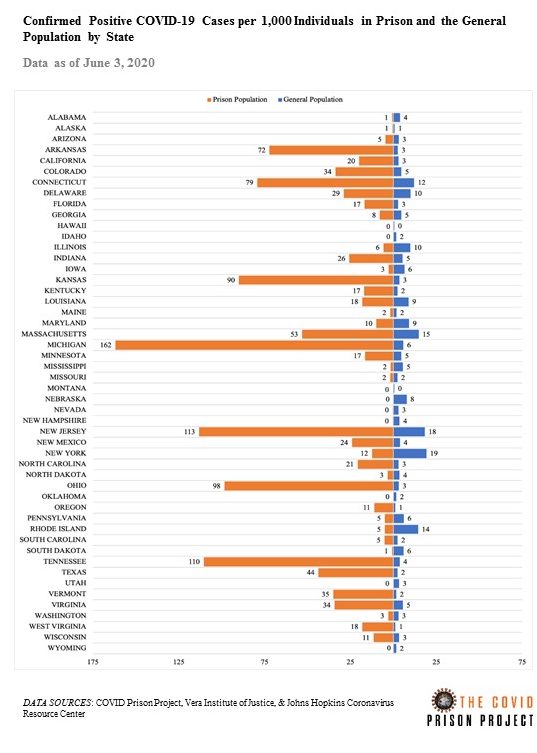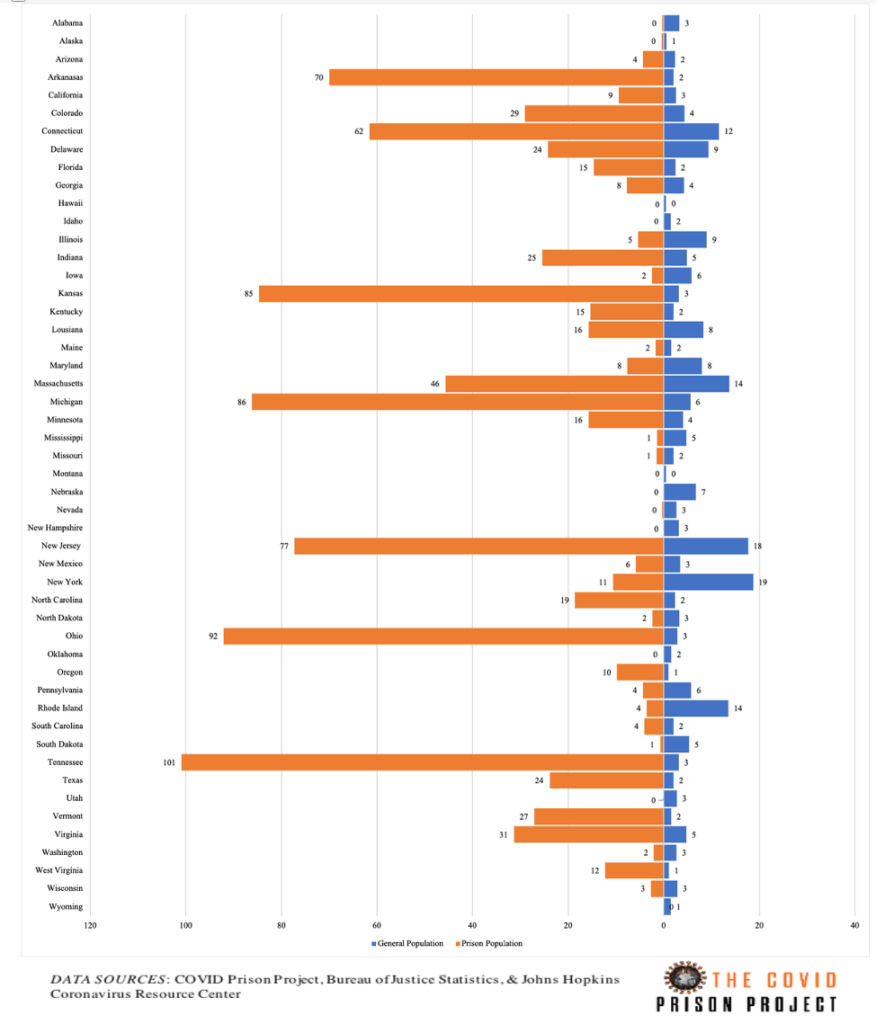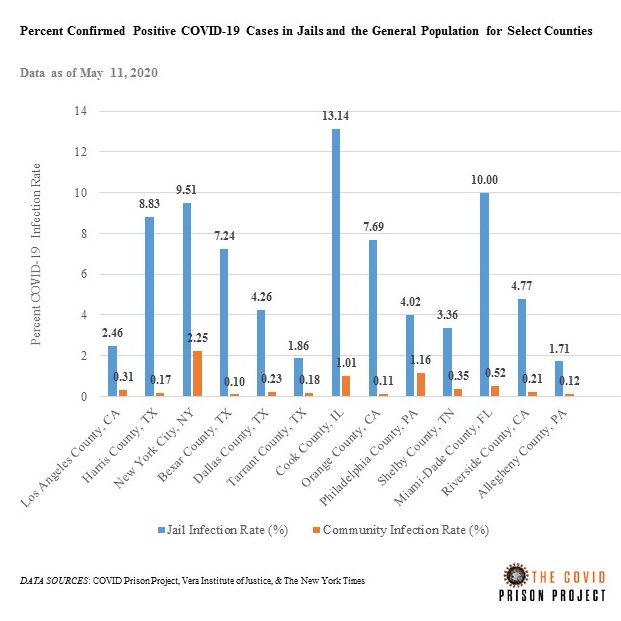As we work to create accurate COVID case counts, it is critical to know the types of tests used by each prison system. Different tests have different information quality (i.e., how good they are at identifying those with COVID and without COVID) and have different types of information (i.e., detecting current COVID infection or those who have had COVID at any point). Both the quality and type of information are needed for us to know how accurate the data are and what story they tell.
From the information we have gleaned, we have various levels of detail. Fortunately, all prison systems we have heard from are using polymerise chain reaction (PCR) tests, which detect current infection rather than ever infection. PCR tests allow for more reliable information for individuals than antibody tests. While antibody tests help track the spread of COVID in a population, given the number of outbreaks in communal living settings, specifically in prisons, PCR tests are crucial. Beyond the fact that most prison systems are using PCR tests, additional information is scattered. Some states have been able to tell us the exact test brand and name (i.e., Georgia, Illinois, Maine), while others have said they don’t have more information than ‘nasal PCR swabs’ or generally ‘PCR tests.’ Still others have said that they work with too many labs to keep track or that they simply do not have the requested testing information.
In sum, 18 states have provided no information, 2 have said that this information is unavailable or unknown, 15 have provided us with some information (i.e., a PCR test is used), 5 states and both the BOP and ICE say they use multiple tests and labs, and 10 have provided full information including the type, name, and brand of test. Making testing information available that is both accurate and precise is critical as we and others track the spread of COVID in prisons. Without it, our information and knowledge is incomplete.



